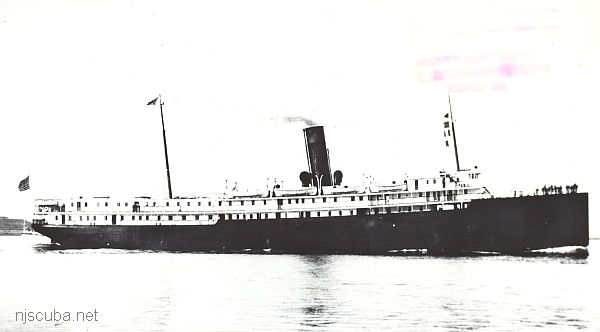City of Athens (1/2)

- Type:
- shipwreck, liner, USA
- Built:
- 1911, New York Shipbuilding, Camden NJ USA, as Somerset
- Specs:
- ( 309 x 46 ft ) 3648 gross tons, 135 passengers & crew
- Sunk:
- Wednesday May 1, 1918
collision with French Navy cruiser La Gloire - 67 casualties - Depth:
- 110 ft
Today the City of Athens sits in 110 ft of water on a sandy bottom. The wreck is in one contiguous piece, however, quite broken up. The most distinctive features are the large boilers near her midsection. Decking and hull plates have collapsed in on her. There is a small section of wreckage believed to be the bridge not far off the port side, some 30 yards or so. The mass of twisted wreckage gives good home to fish and lobsters. Artifacts are also found. Ammo, bottles, brass, and china, have all been found. While some can still be found amidst the metal, most artifacts require digging. Because of her distance from shore, visibility is usually quite good, averaging around 35-40 ft, and occasionally exceeding 60.
The bow is quite intact with the anchor resting at the same place it was stowed. The depth at this point is 93 ft and drops to around 108 as you descend into the hold.
Fish are everywhere, but few large specimens. A nice school of Spadefish cruised the wreck during our visit. Artifacts are present for the patient hand-fanner, along with lobsters. Bits of broken glass and pottery shards lie exposed from earlier artifact hunters. Mussels hang in pods from the rusting hulk.
Visibility is better when a current is present on this site. We had around 25 ft with nice ambient light. Conditions can be on the intense side at times - darkness and a swift current are not uncommon. This should be considered an advanced dive.
- Jeff Barris



Questions or Inquiries?
Just want to say Hello? Sign the .